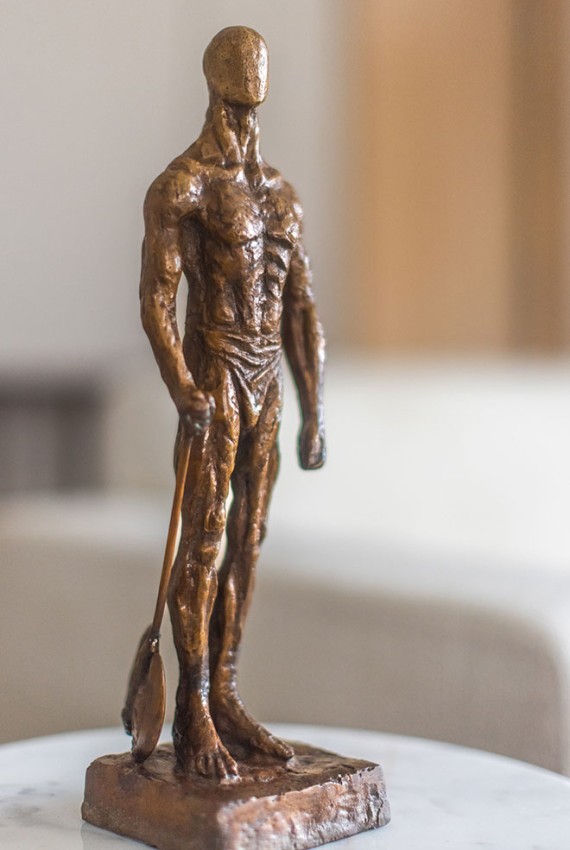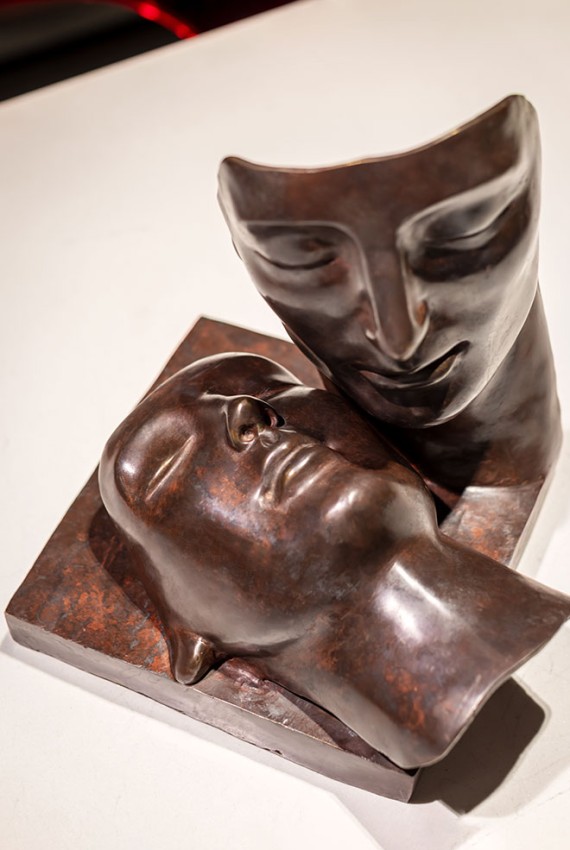
How are Bronze Statues Made?

Bronze statues have a charm of their own and they can easily transform the aura of your spaces. While you must have adorned your homes with bronze sculptures, have you ever wondered how they are made? Well, bronze sculptures are made generally using the Lost Wax casting process. At GART too, we follow this process to create our alluring works of art. Let’s find out in detail about the Lost Wax process.
Every piece of art breeds from an inspiration
What should the bronze statue portray beyond its figurative features? What should it convey? What kind of emotions should it trigger? These are questions that must be addressed at the very beginning. An artist may seek inspiration from his personal experiences, a unique story, or from nature.
Let the art take form in Clay
Before moving on to bronze, a reference model is created in Clay. This may require an armature made of foam or wire to withstand the clay. Depending on how complex or large the sculpture is, different clay models are made separately for each section of the sculpture and put together in the end.
Mold your imagination
Once the clay model is ready, a mold is made for the sculpture by applying materials such as liquid silicon rubber to the clay model. The sculpture’s details are captured in negative and the silicon is cured, after which the mold is encased in another plaster mold to give it more firmness. Generally, large sculptures are made using the “Walnut shell” concept where the mold is split into two halves. This Mold can then be used to replicate the design further.
Forming the Wax Pattern
The clay sculpture is removed from the rubber mold and heated wax of about 200 degrees Fahrenheit is poured inside. The fine details are created by pouring the first layer of hot wax, while the next layers are made using cooler wax of 160-180 degrees. Finally, the form becomes 1/8 to 3/16 inches thick, layer by layer. The cooled wax patterns are pulled from the mold and the final detailing is done by hand. Bubbles or seam lines in the wax are removed using sculpting and hot tools.
The Gate to Beauty
A gating system is created to let the molten bronze flow inside. The gate can be made using wax sprues or branches and the system must ensure efficient flow for molten bronze and allow the gases to escape.
Creating a Ceramic Mold
The gated wax structure is then dipped in ceramic slurry. Both the inside and outside of the hollow waxes are coated, after which, silica sand is applied and dried. These steps are repeated 8-10 times to finally create a thick ceramic mold that encases the waxes.
Letting the wax go
The dried and cured ceramic molds are placed in the burnout oven and the wax is melted at about 800 degrees. This is why the technique is called “Lost Wax.” A hollow cavity is made inside the shells to allow the molten bronze to flow towards each section.
Pouring in the elegance
Generally, the hand-held crucible is directed towards the shells while ensuring that perfect balance is maintained. One must also make sure that the surface of the molten bronze does not have any impurities or slag while pouring in. All the safety measures should be followed during this process.
Wielding it together
If different clay models were made for the sculpture, the bronze pieces are welded together using the same bronze alloy. The welded piece is cleaned, chased, and sanded to add surface texture and ensure that the entire sculpture comes together as a single piece.
Final touches
Bronze sculptures get their peculiar colour by applying patina. The surface of the bronze sculpture is made to undergo a chemical reaction with different metal salts. The tinge of the bronze statue and sculpture will vary depending on the metal salt used for the colouration process. There are different application techniques to define the look and texture. Finally, wax is applied to hot bronze to seal the pores. Once the metal cools down, more layers are applied to add to the lustre.
At GART, we have a wide variety of bronze sculptures and statues that are created using the above-mentioned Lost Wax technique. Explore our collections and bring home this labour of love that depicts pure beauty.








